
The 451st Air Expeditionary Group was a provisional United States Air Force USAFCENT unit. It was assigned to Kandahar Airfield and is also the host unit at Kandahar. It reported to the 455th Air Expeditionary Wing at Bagram Air Base.

The 740th Missile Squadron is a United States Air Force unit stationed at Minot Air Force Base, North Dakota. The squadron is equipped with the LGM-30G Minuteman III intercontinental ballistic missile, with a mission of nuclear deterrence.
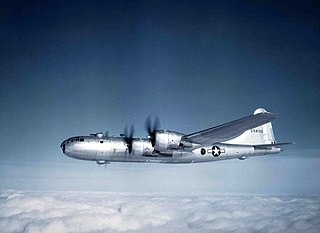
The 382d Bombardment Group is a former United States Army Air Forces unit. It was last stationed at Camp Anza, California, where it was inactivated on 4 January 1946. The group was active from 1942 to 1944 as a heavy bomber training unit. It was reorganized as a very heavy bomber unit and trained for deployment overseas. However, it arrived at its overseas station too late to see combat, and returned to the United States, where it was inactivated.

The 493d Bombardment Group is a former United States Army Air Forces unit that was assigned to the 92d Bombardment Wing during World War II. It the last bombardment group to be assigned to Eighth Air Force. It flew combat missions in the strategic bombing campaign against Germany until shortly before V-E Day, then returned to the United States for inactivation. In 2002, the group was converted to provisional status as the 493d Air Expeditionary Group and assigned to Air Mobility Command to activate or inactivate as needed.
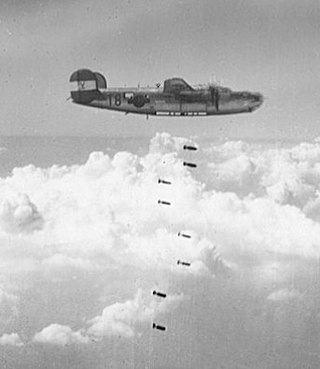
The 491st Bombardment Group is a former United States Army Air Forces unit. It was activated in October 1943 as a heavy bomber unit, drawing its cadre from the former 17th Antisubmarine Squadron. After training in the United States, the group deployed to the European Theater of Operations, where it participated in the strategic bombing campaign against Germany, earning a Distinguished Unit Citation in an attack against Misburg. The group flew 187 combat missions. Following V-E Day, the group returned to the United States and was inactivated at McChord Field, Washington in September 1945.

The 865th Technical Training Squadron is an inactive United States Air Force unit. Its last assignment was with the 1st Missile Division at Redstone Arsenal. Alabama, where it trained Italian Air Force personnel on the SM-78 Jupiter. It was inactivated on 1 November 1959.
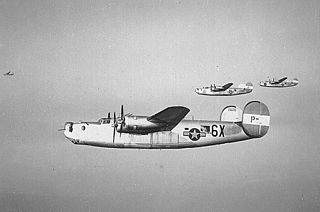
The 855th Bombardment Squadron is an inactive United States Air Force unit. The squadron was first activated as the 522d Bombardment Squadron at Lantana Airport, Florida, in October 1942, when it assumed the personnel and equipment of a National Guard unit engaged in antisubmarine warfare over the Atlantic. The squadron continued antisubmarine patrols as the 17th Antisubmarine Squadron until the summer of 1943, when its mission was transferred to the Navy.

The 725th Strategic Missile Squadron is an inactive United States Air Force unit. It was last assigned to the 451st Strategic Missile Wing at Lowry Air Force Base, Colorado, where it was inactivated on 25 June 1965.

The 724th Strategic Missile Squadron is an inactive United States Air Force unit. It was last assigned to the 451st Strategic Missile Wing at Lowry Air Force Base, Colorado, where it was inactivated on 25 June 1965.

The 852nd Bombardment Squadron is a former United States Army Air Forces unit. It was activated in October 1943 as a heavy bomber unit. After training in the United States, the squadron deployed to the European Theater of Operations, where it participated in the strategic bombing campaign against Germany, earning a Distinguished Unit Citation in an attack against Misburg. Following V-E Day, the squadron returned to the United States and was inactivated at McChord Field, Washington in September 1945.

The 853rd Bombardment Squadron was a United States Army Air Forces unit. It was activated in October 1943 as a heavy bomber unit. After training in the United States, the squadron deployed to Great Britain, where it participated in the strategic bombing campaign against Germany, earning a Distinguished Unit Citation in an attack against Misburg. Following V-E Day, the squadron returned to the United States and was inactivated at McChord Field, Washington in September 1945.

The 854th Bombardment Squadron is a former United States Army Air Forces unit. It was activated in October 1943 as a heavy bomber unit. After training in the United States, the squadron deployed to the European Theater of Operations, where it participated in the strategic bombing campaign against Germany, earning a Distinguished Unit Citation in an attack against Misburg. Following V-E Day, the squadron returned to the United States and was inactivated at McChord Field, Washington in September 1945.
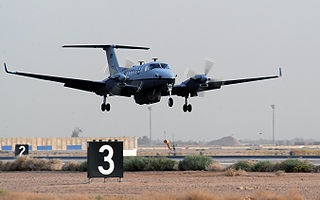
The 361st Expeditionary Reconnaissance Squadron is a provisional United States Air Force unit. It was most recently assigned to the 451st Air Expeditionary Group at Kandahar Airfield, Afghanistan, where it was inactivated on 1 September 2014.

The 833rd Bombardment Squadron is an inactive United States Army Air Forces unit. It trained as a Consolidated B-24 Liberator unit, and deployed with its planes to the European Theater of Operations, entering combat in the strategic bombing campaign against Germany on 7 May 1944. In July 1944, the squadron converted to Boeing B-17 Flying Fortresses, continuing combat with the 486th Bombardment Group until April 1945. Following V-E Day it returned to Drew Field, Florida, where it was inactivated on 7 November 1945.

The 784th Bombardment Squadron is the senior predecessor of the 784th Tactical Air Support Training Squadron. It was organized in August 1943 as a heavy bomber unit. After training in the United States with Consolidated B-24 Liberators, the 784th moved to England, where it participated in the strategic bombing campaign against Germany. Following V-E Day, it returned to the United States, where it began training with Boeing B-29 Superfortresses, but was inactivated in October 1945.

The 787th Air Expeditionary Squadron is a provisional United States Air Force unit, assigned to United States Air Forces Europe. The squadron has been activated twice for contingency operations in Africa.
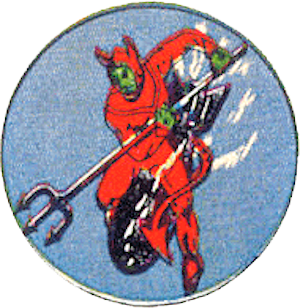
The 420th Bombardment Squadron was unit in the United States Army Air Forces. Its last assignment was with 382d Bombardment Group stationed at Camp Anza, California. It was inactivated on 4 January 1946 without seeing combat.

The 743d Bombardment Squadron was first activated in June 1943. After training in the United States with the Consolidated B-24 Liberator bombers, the 743d deployed to the Mediterranean Theater of Operations, participating in the strategic bombing campaign against Germany. It earned two Distinguished Unit Citations for its combat operations. Following V-E Day, it remained in Italy without its flight echelon until inactivating in September 1945

The 726th Bombardment Squadron is a former United States Army Air Forces unit. It was last assigned to the 451st Bombardment Group at Dow Field, Maine, where it was inactivated on 26 September 1945. The squadron was activated during World War II as one of the original squadrons of the 451st Bombardment Group. After training in the United States, it served in the Mediterranean Theater of Operations, where it participated in the strategic bombing campaign against Germany. It earned three Distinguished Unit Citations for its combat actions. After VE Day the squadron returned to the United States, where it was inactivated.
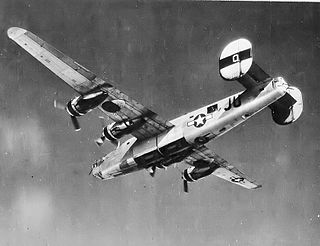
The 707th Bombardment Squadron is an inactive United States Air Force unit. It was last assigned to Twelfth Air Force at Lubbock Air Force Base, Texas, where it was inactivated in March 1950.






















